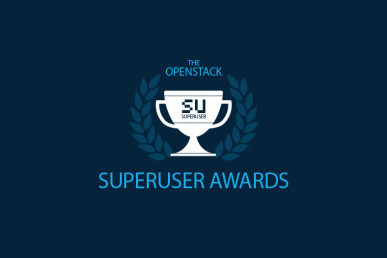It’s time for the community to determine the winner of the Superuser Award to be presented at the OpenStack Tokyo Summit. Based on the nominations received, the Superuser Editorial Advisory Board conducted the first round of judging and narrowed the pool to four finalists.
Now, it’s your turn.
Lithium is among the four finalists for the Superuser Awards. Review the nomination criteria below, check out the other nominees and vote before the deadline Monday, October 12th at 11:59 p.m. Pacific Time Zone.
What kinds of applications are being built or run on Lihtium’s OpenStack cloud?
Lithium’s cloud strategy is to deliver key highly available workloads on OpenStack. We’re in flight with our core applications being refactored and deployed on OpenStack. The goal at Lithium is to build “cloud native” and migrate existing applications to OpenStack. Applications are being delivered either in OpenStack-provided virtual machines (VMs) or containers running on top of OpenStack using Heat or container orchestration platforms like Kubernetes.
In terms of application stack details, here are a few that we’re currently running on OpenStack in production. All applications are providing functionality to our Software-as-a-Service (SaaS) platform that is serving our customers:
- Databases (mysql)
- Elasticsearch
- Build and deployment tools CI/CD (Jenkins, Bamboo)
- Leader election and k/v stores (ZooKeeper, Consul)
- Web front ends, Apache, Tomcat, node
- Kafka
- Java apps
How has OpenStack transformed your business?
OpenStack has completely redefined how we write, test, and deliver our software-as-a-service (SaaS) platform.
OpenStack’s impact on our culture has been a DevOps enabler: we can deliver a self-service infrastructure for our application developers to consume. We worked with lighthouse developers on highly visible projects to provide concrete cloud use-cases and success stories. The whole development team was able to see the benefits of deploying their application to the cloud, and when new projects where launched, there were no questions as to where they would deploy these apps other than to the cloud.
In terms of unlocked infrastructure, we were first consumers of public cloud, and OpenStack provided a solution to running a cloud on our terms. We had access to infrastructure and control that couldn’t be achieved in public clouds. For example, network storage was always something that we never had a great experience with in public clouds. OpenStack also gave us proximity to existing non-cloud workloads, and we also understood the failure domains much better given that we had a full picture of how the infrastructure was built.
OpenStack allowed us to achieve faster build-times and provided a larger resource pool to host continuous integration/continuous delivery (CI/CD) workloads. Using plugins, we can dynamically provision VMs/containers as part of the CI/CD process which was something not previously achievable on bare-metal.
OpenStack provided a platform to build a common deployment pipeline, which was almost unachievable in the past. This allowed us to create patterns that development could leverage to remove existing challenges with application deployment, hosting and reduced time-to-market.
Moving all new and existing workloads to the cloud enabled us to achieve a much greater density than previous bare-metal infrastructure deployments. This enabled greatly reduced infrastructure costs, by being able to close a 12 rack cage (approximately 50,000 USD per month) in the US this year and an eight rack cage in Europe (approximately 20,000 USD per month) planned this year.
OpenStack has created a platform for us to be able to deploy our SaaS platform onsite as an offering to our customers to be able to solve proximity and data residency problems and this has created new revenue streams for us.
How have you participated in or contributed to the OpenStack community?
We have had direct contribution to open source projects surrounding OpenStack. For example, knife-openstack, datadog’s OpenStack monitor and SolidFire storage monitoring for OpenStack. We have worked on bug fixes with Mirantis, and there have been multiple bugs that we’ve reported and partnered to solve together. Examples include, RabbitMQ/Oslo messaging issues and CEPH deployment and integration.
Lithium has also shown strong support at OpenStack Summits; several members of the team have been attending summits since Portland. As a team, we have had several sessions chosen for the Vancouver Summit, OpenStack Silicon Valley 2015, the Tokyo Summit and foresee doing more in the future. We also have a team member serving on the OpenContrail Advisory Board which aims to provide direction and integration with not only OpenStack but open source projects as a whole.
Lithium is also very involved in meet-ups and user groups. Our team runs the San Francisco CloudOps meet-up to not only share how we are running workloads in the cloud, but to act as a forum to start conversations between members of the open source community in the area. We also frequently host guests, either users/operators or vendors that operate in the OpenStack space. Two members of the team are also involved in the Bay area OpenStack Operator user group. This is a forum where we can connect with other user/operators in the area and provide solid use-cases back to OpenStack project team leads (PTLs).
We’ve had many iterations of OpenStack internally and have always believed in the project and how it can change our business. We are currently running Icehouse and Juno in production, but have been involved and had deployments since the Folsom, Grizzly days.
Use-cases: partnering with Mirantis we’ve been able to use our experience as user/operators to provide feedback to the Mirantis product and help them to provide better user experience and platform stability.
Forward-thinking: using the OpenStack platform to provide next-generation workload support. We’ve been very active in the container space and have provided numerous working examples of how you can use OpenStack to deliver next-generation workloads.
What is the scale of your OpenStack deployment?
At the time of this writing, we have a single OpenStack deployment in the U.S. and are currently building and will deliver another OpenStack powered cloud in Europe, the Middle East and Africa by October 2015. Currently, our U.S. OpenStack deployment is about 1,000 VMs running atop 50 computes, but we expect that number to double by the end of the year.
We have just implemented container orchestration using Kubernetes which runs on top of OpenStack VMs. Our developers are now aggressively deploying new microservices using containers so we expect the number of containers to surpass the number of VMs quickly. OpenStack is currently powering production workloads in the U.S. and will be in Europe, the Middle East and Africa.
Read more about the Tokyo Superuser Awards finalists here and cast your vote. Voting is limited to one ballot per person, and closes on Monday, October 12th at 11:59 p.m. Pacific Time Zone.
Cover Photo by Amber Case // CC BY NC
- Demystifying Confidential Containers with a Live Kata Containers Demo - July 13, 2023
- OpenInfra Summit Vancouver Recap: 50 things You Need to Know - June 16, 2023
- Congratulations to the 2023 Superuser Awards Winner: Bloomberg - June 13, 2023

)










